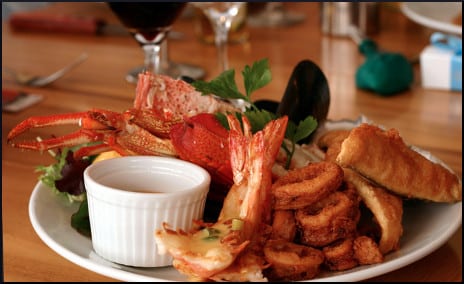 Risk management expert Robin Desrocher developed a continuing education course for physicians, with the object of helping them reduce their exposure to malpractice liability. The downloadable PDF file includes, on page 2, a list of “Secondary Causes of Obesity” as they were known in 2009. There are 15, ranging from hypothyroidism and pseudohypoparathyroidism to eating disorders. The document names six different “genetic syndromes,” and under “medication related,” it enumerates a dozen classes of pharmaceuticals that could contribute to obesity.
Risk management expert Robin Desrocher developed a continuing education course for physicians, with the object of helping them reduce their exposure to malpractice liability. The downloadable PDF file includes, on page 2, a list of “Secondary Causes of Obesity” as they were known in 2009. There are 15, ranging from hypothyroidism and pseudohypoparathyroidism to eating disorders. The document names six different “genetic syndromes,” and under “medication related,” it enumerates a dozen classes of pharmaceuticals that could contribute to obesity.
Michael Prager once wrote that a top expert, Dr. Lee Kaplan of the Massachusetts General Hospital Weight Center, had counted 66 kinds of obesity. It is not surprising that multiple causes have been suggested—many more than the 15 that Desrocher had listed only five years before Kaplan made his list. Fingers have been pointed at many suspected contributors to the obesity epidemic, ranging from the sublime to the ridiculous.
Having too many choices, or the illusion of them anyway, was the dilemma faced by the main character in Sylvia Plath’s famous novel, The Bell Jar. In a different but equally destructive way, having too many choices can lead to obesity, according to a paper collaborated on by researchers at two colleges and published by the journal Endocrinology. Prof. Deborah Good, one of the authors, said:
We like variety, but when there is a choice, we eat more than when there is not any variety.
The report emphasized that, for a child, post-birth environmental factors are as important as the mother’s prenatal diet. In this context, the environment means the home, so parents are encouraged to run a tight ship and not try to stock the galley with a multitude of edibles. The advice fits in nicely with another caveat, this one issued by Ohio State University, whose recently published study (in the International Journal of Obesity) confirms the truth of the old saying, “Out of sight, out of mind.” Researchers found that visible food correlates with obesity. This also validates an old joke that doesn’t work in print, about being on the “seafood diet.” The listener says, “What’s that?” and the first person says, “When I see food, I eat it.” The take-away is that if food must be visible outside the kitchen, let it be fresh fruit.
Aging Deadens Taste Buds
The National Institute on Deafness and Other Communication Disorders has determined that, by the young age of 20, half of a person’s oral taste receptors have already been lost. But we want to taste flavors, especially sweet and salty ones, so we pour on the salt and sugar to compensate for the dead taste buds. The connection with obesity is obvious. There is hope here, too, no matter how far-fetched. Maybe this problem is curable. Can stem cells rebuild taste receptors good as new? There are other possibilities. MedicalDaily.com says:
The tongue is composed of living cells, which can be taught to love the vegetables you may hate right now. By improving agriculture, humans can reengineer their taste buds to develop the healthier and more natural flavor profile our ancestors were once born with. Taste perceptions can even change with weight loss…The tongue may be the key to reversing the obesity epidemic if taste buds can be retrained properly.
Reactions?
Source: “Weighty matters – Screening, evaluation, and treatment of obesity,” sasa-web.net, 2009
Source: “On Ted Kyle’s “three tribes of obesity”,” MichaelPrager.com, 11/14/14
Source: “Too many food choices exacerbate the battle against obesity, researchers find,” VT.edu, 02/23/15
Source: “Study Uncovers Simple Weight-Loss Strategy: Keep Food Out of Sight.” NewsMax.com, 04/28/15
Source: “The Food Industry Has Changed How Our Taste Buds Work,” MedicalDaily.com, 06/14/15
Image by Andy Todd

 FAQs and Media Requests:
FAQs and Media Requests: 











